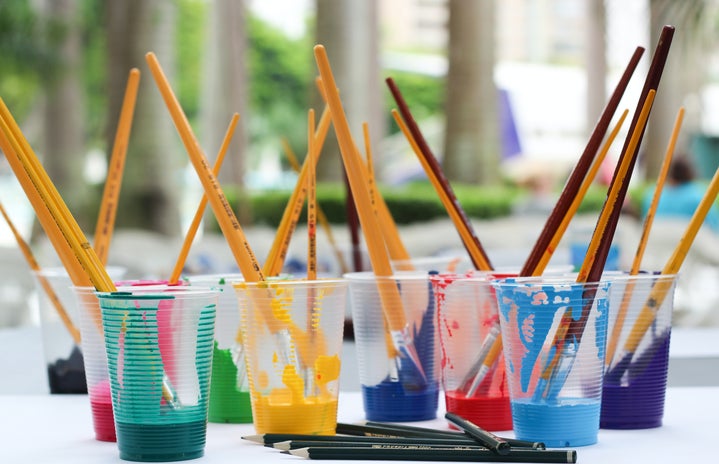This past Thursday, students and faculty of the Art Department gathered in the Mount Holyoke College Art Museum to hear Danica Phelps give a much-anticipated lecture on her work. Danica Phelps is a well-known conceptual and visual artist, who is in fact no stranger to the Pioneer Valley, as she graduated from Hampshire College in 1993. Since people outside of the art community may not be familiar with Danica Phelps, I thought I would take this opportunity to share a little bit about her art and what she addressed in her talk.
One of the coolest things art can do is force us to think. Danica Phelps accomplishes this really well, and it is largely due to the subjects she chooses to focus on in her pieces. Danica spoke to us about her most notable project, “Mark Down,” in which she catalogues her life down to the 15-minute interval through pencil drawings of the mundane, collections of lists, and organized red and green markings that represent her expenses and earnings. Although this seems like such a characteristically boring concept, it attracts people. Danica presented us with an important question about this project, “Why would anyone care?” Reflecting upon this question, it became clear to us that the more personal art is to its creator—regardless of whether it’s personal on a quotidian level or deeply emotional level—the more people can relate to it. The mundane objects that Danica draws such as bowls of soup and handfuls of grocery bags get people to pay attention to the mundane things in their own lives, not necessarily for the purpose of seeing beauty in them, but literally just to find worth in the minutiae of their surroundings. Danica’s art stands out because it presents itself as an indirect way to “participate in the emotional and economic transformations of her daily life as an artist and a mother.” It is a window into her life, a very small but clear window that allows us to formulate our own perceptions about her life and the way she thinks, paralleling the notion that the famous red and green lines that distinguish this project (and nearly all of her art) have more meaning than we initially realize.
The “Mark Down” project also highlights Danica’s beautiful pencil drawings. Danica’s approach to illustration is an interesting one. Her style is very organic and visually appealing because she draws as if you can see through everything. During her lecture, Danica revealed that this style actually came about because while she was learning to draw, making everything transparent helped her a lot with respect to spatializing and perspective. Not only is this helpful drawing advice to art students like myself, but the fact that she doesn’t “correct” the transparency and still manages to produce such refined forms is also really special. Danica’s drawing technique allows for her to describe the subjects in a very different, tangled yet fluid way, forcing everything to be related in some manner and emphasizing any connections there might already be.
As art students, we definitely learn the most from viewing the artwork itself. But to hear an artist speak directly about his or her entire body of work, process, and motives is a whole other learning experience, and it was certainly a privilege to be able to have Danica Phelps speak to us. Each individual artist we study gives us whole new set of insights and appreciation of mediums and subjects. In response to Danica Phelps’ artistry, Christine Hill of Bomb Magazine affirms a prevailing impression, “If we’re rioting, then I’m for Danica Phelps’s form of revolution. She is not distracted by issues like transcendence; she is making everything she can out of what she has at her immediate disposal. Everyday occurrences fuel her work.” Artists like Danica Phelps are who we strive to become like, especially for people to look at and analyze our work in the way we do hers.
If you would like to write for Her Campus Mount Holyoke, or if you have any questions or comments for us, please email mt-holyoke@hercampus.com.



